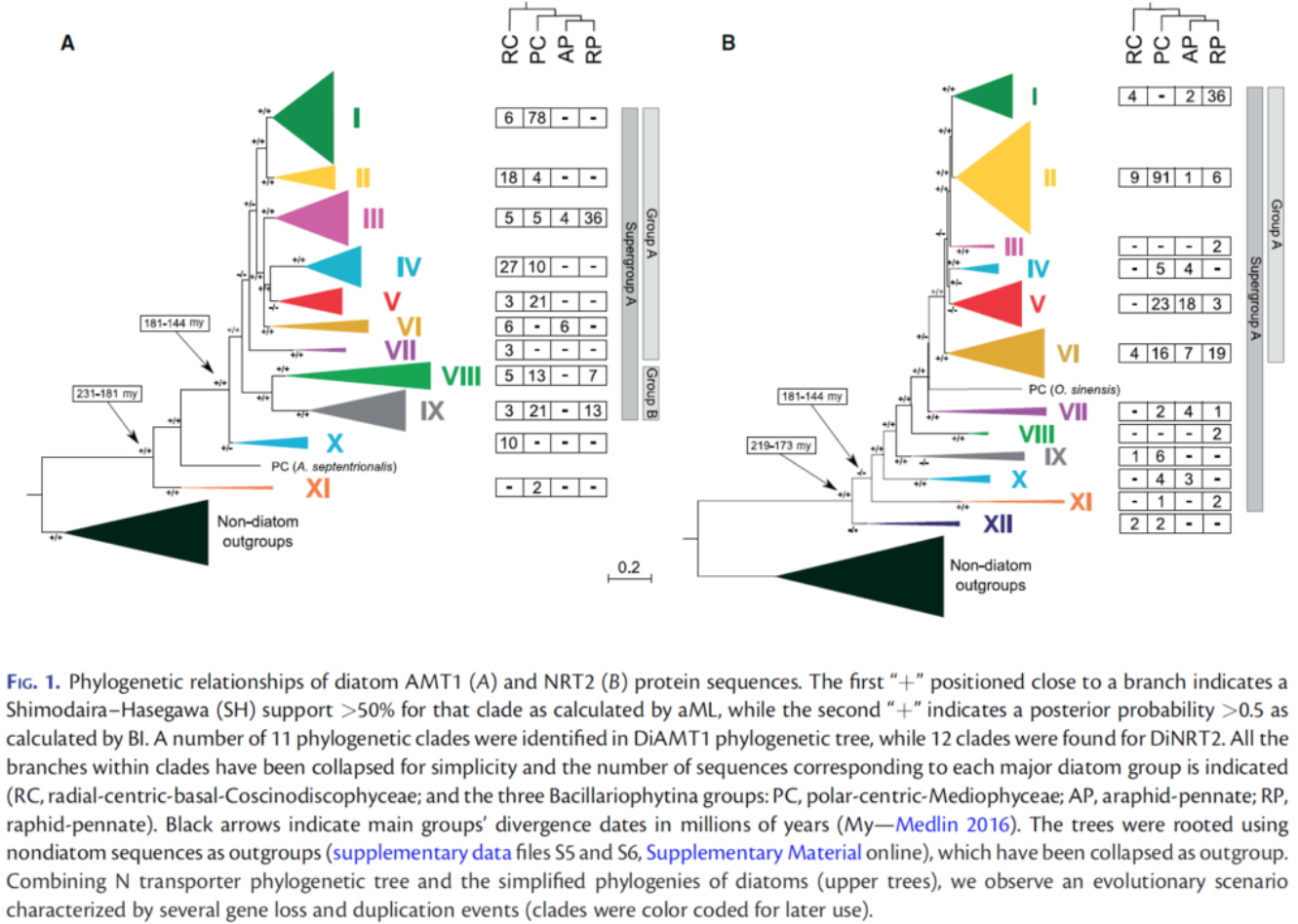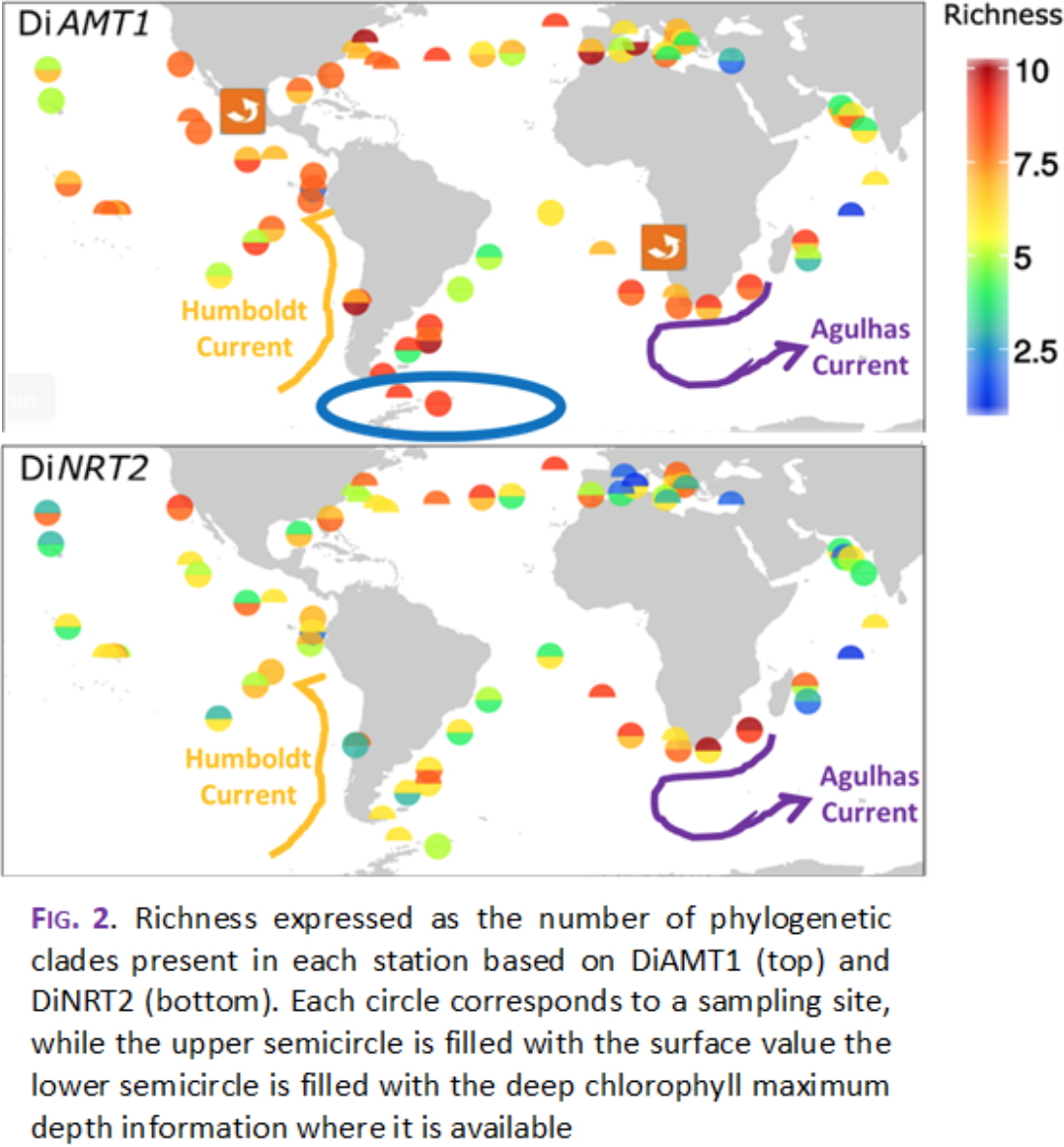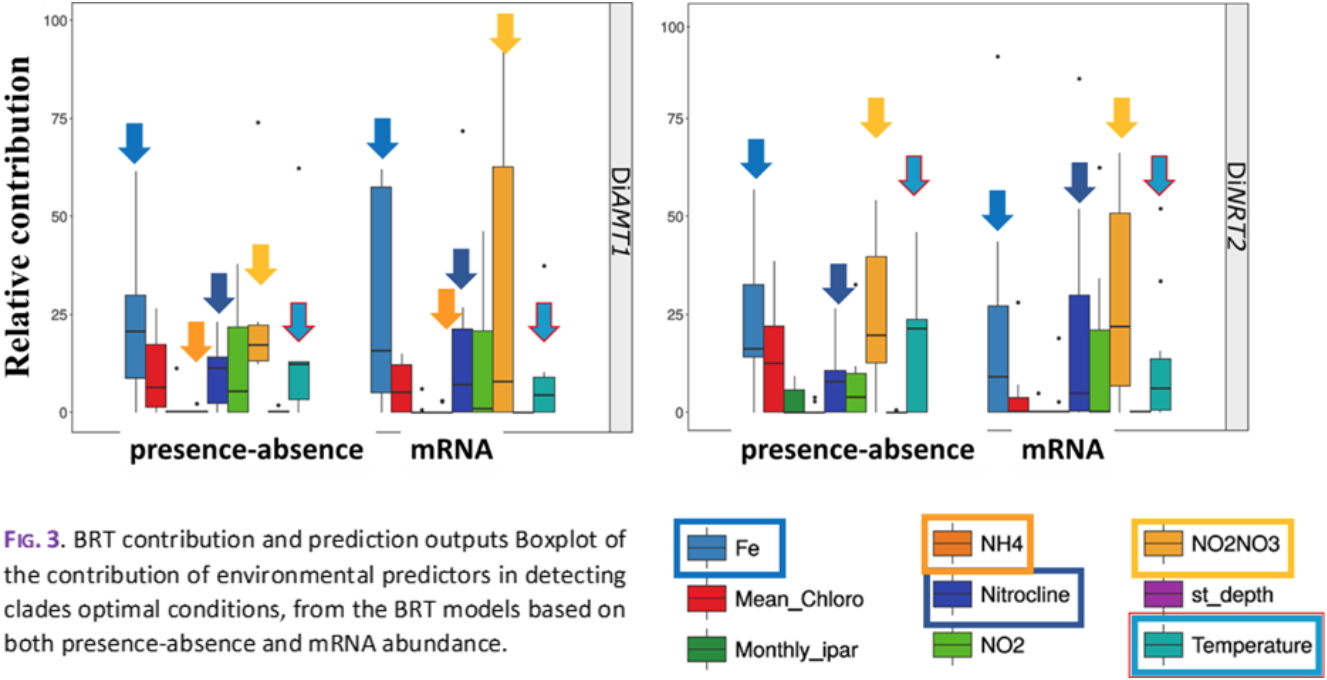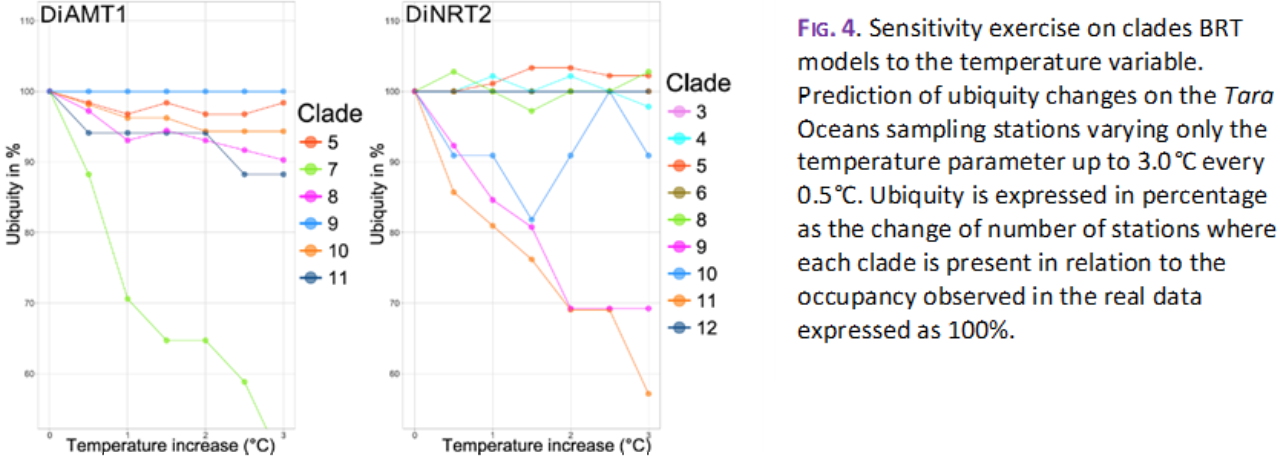A very fruitful
collaboration between Italy and France, was published on July 1
st 2019 in
Molecular Biology and Evolution [1]. This work stem the PhD thesis of an Italian brilliant student in molecular ecology, Greta Busseni. Greta’s work focused on nitrogen transporters in marine diatoms and their ability to cope with environmental changes,
e.g. the temperature and the concentration of several nutrients such as nitrate, nitrite and iron. This work follows up a review paper, published in 2015 in the journal
Marine Genomics [2] in which the authors identified ammonia and nitrogen transporter genes (Di
AMT1 and Di
NRT2) in different diatom species and correlated their expression with nitrogen availability in the ocean. They concluded ‘[…] diatoms experience […] markedly different growth conditions, due to depletion of N or Si, or sudden high N availability. This drove the selection of particularly effective and competitive uptake systems […], making diatoms particularly good in handling fluctuating nutrient concentrations. […] The overall motivation to invest research efforts on molecular mechanisms acting in diatoms […] is for their importance in the Earth functioning […] any prediction on […] climatic changes must include a reliable assessment of how plankton will react’.
Diatoms are, among phytoplankton, the most species-rich phylum of photosynthetic protists, as well as the most abundant. Their ecological relevance is witnessed by their primary production. Diatoms produce one fifth of the total oxygen on Earth every year,
i.e. more than the rain forests. Taking advantage of the data collected during the
Tara Océan project, led by Dr. Chris Bowler, during which genomics and transcriptomics data, as well as physico-chemical feature of the water column, were collected, the nitrogen transporters in diatoms were investigated on a global scale.
First of all, the Di
AMT1 and Di
NRT2 were searched in the Tara Oceans unigene catalogue using machine learning and optimization approaches. This exercise identified 307 Di
AMT1 and 281 Di
NRT2 that were used in a Bayesian phylogenetic analysis (Fig. 1). The tree topology suggests that the evolutionary history of the two gene families is characterised by clade expansion followed by differential gene loss for Di
NRT2 and clade reduction for Di
AMT1 without any lateral gene transfer. Moreover, the protein structures (as of the translation of the nucleotide sequences) corroborated that found in other organisms, supporting the predicted function hypothesised by sequence homology.

The analysis of the Tara Oceans 18S ribosomal database highlighted strong taxonomical diversity in the different basins, therefore, in order to depict the functional diversity of the different clades, the Tara Oceans meta-transcriptomic dataset was used. Richness was calculated in all the sampling sites for Di
AMT1 (Fig. 2, upper panel) and D
iNRT2 (Fig. 2, lower panel). This analysis showed that members of the former family are more diverse in terms of number of clades present in up-welling areas (indicated by an orange curved arrow in Fig. 2) and in highly dynamic water conditions. Hotspots of clade diversity are located at the Agulhas Current (in purple in Fig. 2) and in upwelling sites such as the Benguela, California, and Humboldt Currents (in light orange in Fig. 2) for both Di
AMT1 and Di
NRT2, as well as in Antarctic stations (blue ellipse in Fig. 2) where, in particular, Di
AMT1 richness displays a peak.

Altogether these results suggest that the evolution of the nitrogen transporters led to a differentiation between genes able to feature environmentally driven acclimation and genes which are not; Di
AMT1 are more specialised to local conditions, whilst Di
NRT2 show higher functional redundancy.
In order to define how N transporters respond to the different environmental triggers, the fine-tuning of the single phylogenetic clade expression level were analysed in comparison to nine physico-chemical features of the water column. Interestingly, mRNA levels of both Di
AMT1 and Di
NRT2 are negatively correlated with variables related to nitrogen (not shown). This may indicate that, independently of other N sources, the major response to NO
3- NO
2- replete conditions for several clades is to decrease the abundance of mRNAs encoding the N uptake machinery.
To better test which environmental variables trigger the expression of N transporter genes, we applied the Boosted Regression Tree method (BRT), a machine learning technique proposed to delineate the niche of a group of organisms, identifying the best predictor variables for a given event and taking into account nonlinear relationships between the variables. Both presence-absence (the “niche”) and abundance (the mRNA level) data of the N transporter clades to the environmental variables were analysed. BRT method showed that 1) both Di
AMT1 and Di
NRT2 vary with [NO
2-NO
3-] (yellow in Fig. 3), 2)
temperature is one of the most important variables for both presence-absence and expression of DiNRT2 (red delimited light blue in Fig. 3), 3) [Fe] is the main driver for both presence-absence and expression (blue in Fig. 3), 4) nitricline depth plays a role in both presence-absence and expression (dark blue in Gig. 3),
i.e. the balance between new and recycled nitrogen is crucial ecosystem functioning. 5) Astonishingly, Di
AMT1 is not affected at all by [NH
4+] (orange in Fig. 3).

The world ocean temperature is growing higher because of the ‘
Global Warming’ and as demonstrated above at least Di
NRT2 family is sensitive to temperature. For this reason, a forecast exercise was made to check for the sensitivity of each phylogenetic clade to temperature variations.
The probability of the presence of each clade in every sampled station was computed with an increase of temperature up to 3.0 °C, with 0.5 °C increments, keeping the other variables unchanged. Di
NRT2 clades were the most temperature-sensitive (Fig. 4, right panel), showing three clades with strongly narrower distributions caused by increased temperatures, while Di
AMT1 family, as already shown (Fig. 3 left panel), presented ony one clade to be sensitive to temperature variations.

To conclude, a
remarkable complexity of evolutionary solutions and gene expression regulation emerged from this study, highlighting the
sophisticated behaviors of diatoms as a group. This finding undermines the general view of diatoms responding uniformly to nitrogen, especially NO
3-, availability and advocates for the need of a deeper understanding of the factors that concur in the regulation of the uptake of all forms of nitrogen along with the different environmental contexts, likely contributing to their
ecological and functional differentiation.
Collaboration
Italy: Stazione Zoologica Anton Dohrn, Naples; Institute of Biosciences and BioResources, Naples, Scuola Internazionale Superiore di Studi Avanzati (SISSA), Trieste; Dipartimento di Biologia e Biotecnologie “Charles Darwin”, La Sapienza University, Rome
France: Intitut de Biologie de l’Ecole normale Superieure (IBENS), Paris; Laboratoire de Physiologie Cellulaire & Végétale, IRIG, Grenoble; Génomique Métabolique, Genoscope, Institut François Jacob, Evry.